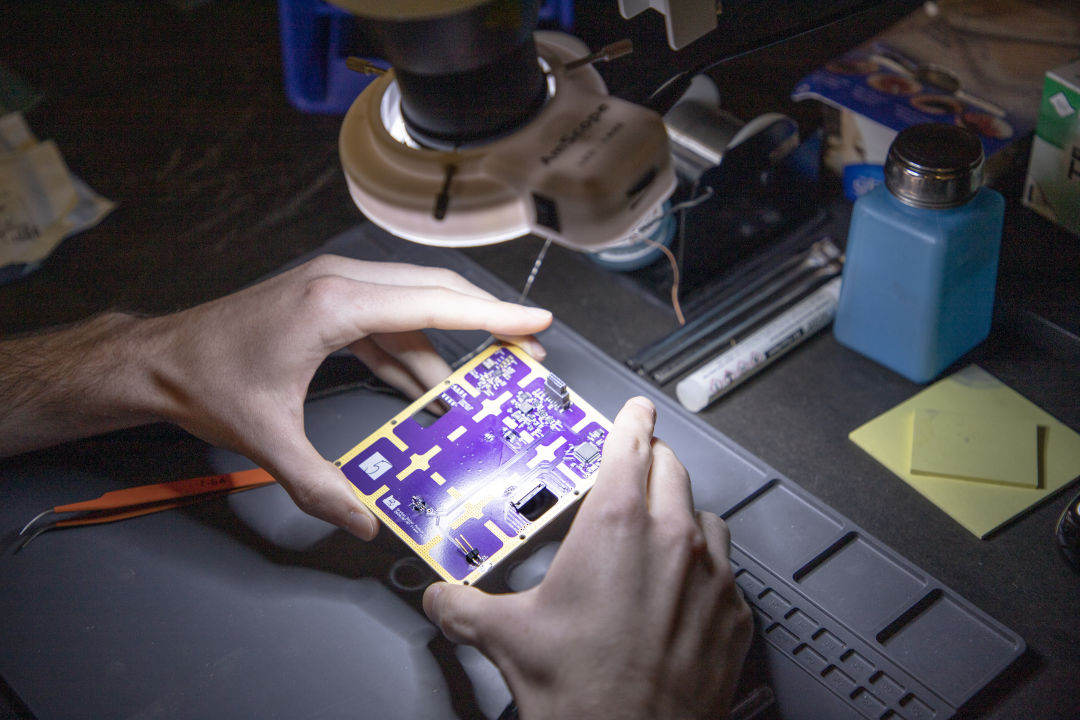Look Up, Look Down, All Around—Hey, (It's an Oregon) Satellite

Working on the OreSat0, to ready it for its journey to space.
Image: Courtesy Patric Simon
As almost any great movie about space can tell you, every second before a great achievement is ticked away on a giant red countdown clock. The clock in the basement of Portland State University's Fariborz Maseeh College of Engineering and Computer Science is about ten times larger than the subject of its countdown: a mini purple cube named the OreSat0.
Its mission is simple, says PSU Electrical and Computer Engineering Adjunct Professor Andrew Greenberg: “It’s supposed to not catch fire in space.”
The OreSat0, Oregon’s first satellite to ever go to space, is the result of months of hard work by members of the Portland Space Aerospace Society including students from PSU, Portland Community College, and even local high schools.

Some of the team who worked on the OreSat0.
The project has been pointedly interdisciplinary, bringing together students from many different fields like physics, engineering, business, and even the humanities.
The result is part of NASA’s CubeSat Launch Initiative, which makes it cheaper for universities to build and launch their own satellites. The program funded both the OreSat0 and its younger sibling, the similarly named OreSat. This first launch will be all about testing the technology before the OreSat embarks on its research mission sometime in late 2022.
The OreSat’s mission is twofold. First, it will study cirrus clouds to help climate scientists create more accurate computer models of global warming. Second, it’s part of a STEM outreach program where high school students can build a ground station and capture live video from the satellite as it travels overhead.
“We call it a 400 kilometer selfie stick,” says Greenberg.
Ultimately, the OreSat and CubeSat programs are all about making aerospace technology more accessible. To that end, the OreSat project is entirely open source. Anyone with the tools and time can go online and download the source of the project’s hardware and software and build their own CubeSat. Open source satellites are still uncommon: There are only two other open source satellites in space right now, Greenberg says.
This project could change that. Greenberg and his students say they’ve heard from schools across the globe that are interested in using OreSat0’s software.
Until then, the OreSat0 is making its journey to Space Flight in Seattle, Washington and then Florida, where it will launch into space aboard a SpaceX Falcon 9 rocket.




